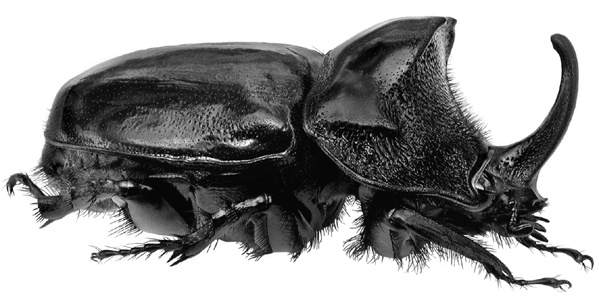 |
|||||||
|
|||||||
|
||
| Dynastinae Taxa Map | ||
| Dynastinae Key | ||
| Oryctini Key |
........Heterogomphus Burmeister 1847: 224.
........Stypotrupes Burmeister 1847: 210 (synonym).
........Daemonoplus Thomson 1859a: 68 (subgenus).
........Baryxenus Bates 1891: 33 (synonym).
........Syneterogomphus Prell 1912a: 53 (synonym).
........Ortheterogomphus Prell 1912b: 103 (synonym).
........Heterogomphidium Prell 1912b: 105 (synonym).
........Hoplitogomphus Prell 1912b: 123 (synonym).
........Dineterogomphus Prell 1912b: 129 (synonym).
........Psileterogomphus Prell 1912b: 141 (synonym).
........Neobaryxenus Prell 1912b: 148 (synonym).
........Anoplogomphus Prell 1912b: 149 (synonym).
........Notheterogomphus Prell 1912b: 156 (synonym).
........Tracheterogomphus Prell 1912b: 161 (synonym).
Heterogomphus chevrolati.
Distribution: Heterogomphus occurs in Central and South America.
Composition: The genus Heterogomphus contains 47 species (Endrödi 1976b, 1985a; Dechambre 1986a).
Diagnosis: Species in the genus Heterogomphus may be recognized by the combination of quadridentate protibia, teeth of the protibia directed obliquely forward, males with a large head horn, females with one or two tubercles on the head (only one tubercle in the species considered here; never with a horn), and prosternal process long and stout.
Heterogomphus females, especially H. mniszechi, are easily confused with the females of some Golofa species (Dynastini). They are all about the same size, black, and with densely punctate elytra. In H. mniszechi females, the basal segment of the protarsus is distinctly shorter than the apical spur of the protibia. In Golofa females, the basal segment of the protarsus is subequal to or longer than the apical spur of the protibia (except for G. tersander Burmeister, where it may occasionally be shorter). In addition, while the apex of the prosternal process may have long, dense setae in both genera, the shaft of the process is normally glabrous or sparsely setose in Heterogomphus and densely setose in Golofa. Prell (1912b) was the first to provide a comprehensive treatment of the genus, and Endrödi (1976b, 1985a) gave the most recent synopsis.
The subgenus Daemonoplus contains those species with the apex of the metatibia with a central tooth and the pronotum of the males with three horns (H. mniszechi [Thomson] and H. flohri [Kolbe]).
Biological notes: In spite of the occasional abundance of some species of Heterogomphus, very little is known of their biology or immature stages. Adults are nocturnal, and many are attracted to lights at night. Where the larvae are known, they seem to feed on organic debris in the soil.
|
||||
|
|
